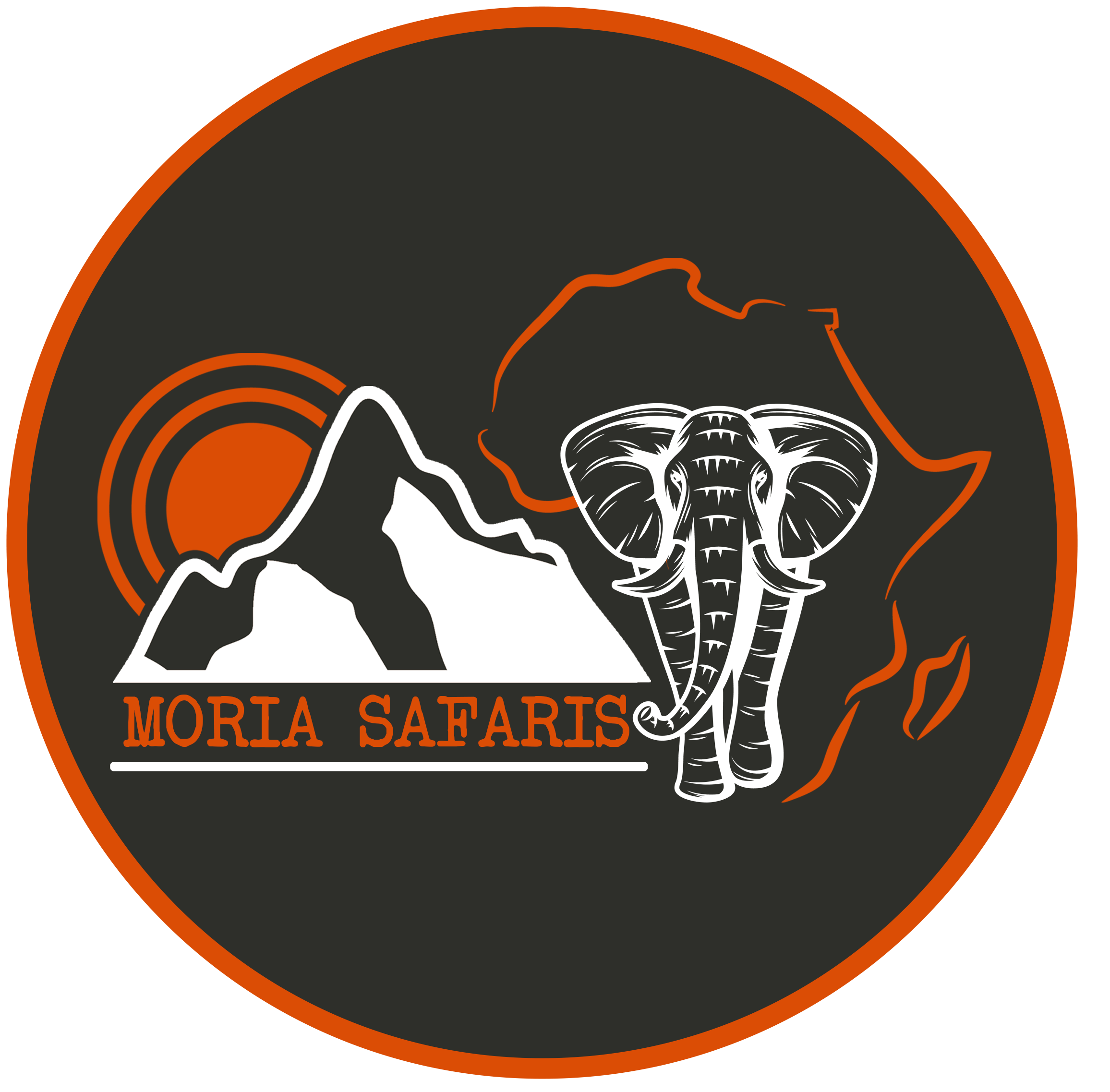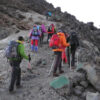Optimal Timing for Ascending Mount Kilimanjaro When determining the most favorable period for your Kilimanjaro expedition, it’s essential to take multiple factors into account, including temperature, scenic vistas, trail congestion, difficulty level, and safety. Nevertheless, the overarching factor that influences all these aspects is the prevailing weather. Mount Kilimanjaro is situated within an equatorial climatic region, meaning it foregoes the traditional four-season cycle (winter, spring, summer, and autumn) in favor of solely experiencing wet and dry seasons. The wet seasons typically occur in April-May and November. Much like in other tropical regions, precisely pinpointing the onset and conclusion of rainfall can be a challenging feat. As for the remaining months, they constitute the “dry season,” marked by predominantly sunny days; however, it’s important to note that this doesn’t guarantee an absolute absence of cloud cover.
Two predominant climbing seasons stand out: the first spans from July through August to September, and the second from January to February. These time frames align with the summer and Christmas holidays for many travelers, coinciding with the idyllic weather conditions for ascending Mount Kilimanjaro.
Conversely, the rainy seasons tend to deter a large portion of climbers. In April, May, and November, the likelihood of trekking amid drizzling rain is considerably high. Rainfall softens the terrain, rendering rocks slippery and elevating the challenge and risk of your ascent. Nonetheless, these rainy interludes hold a particular allure for landscape photographers, especially those captivated by Tanzania’s unique beauty. The increased precipitation leads to more snow adorning the peak, offering the opportunity to capture Kilimanjaro’s snow-clad summit. Furthermore, it’s the sole period when you can evade the “peak-hour” rush on the routes, relishing the solitude of traversing virgin-snow-blanketed trails.
What Is the Ideal Time to Conquer Kilimanjaro?
April to May:
The “big” rainy season unfolds from late March to mid-May, coinciding with the onset of Tanzania’s chilliest period. These months see significantly fewer climbers compared to the rest of the year, but they come with a higher likelihood of trekking through rainfall.
June to July:
As June and July arrive, rain becomes less frequent. These months typically bless Kilimanjaro with dry, clear weather, although the nights remain chilly. June, in particular, tends to be quiet, sunny, and often underrated for climbing. Opting for a June expedition means benefiting from excellent weather and nearly exclusive access to your chosen routes. As the year progresses, climbing traffic increases, with July signaling the beginning of heightened route congestion.
August to September:
Peak climbing season unfolds from August to September, presenting ideal conditions for ascending Kilimanjaro. Days are generally clear and slightly warmer than in June or July. However, rain may persist in the forest and moorland zones and occasionally affect the southern routes like Machame and Umbwe. Once you leave the rainforest behind, expect sunny skies.
October: October,
Another somewhat overlooked season, boasts favorable weather conditions that extend into mid-October, accompanied by a significant drop in the number of climbers. This presents a unique opportunity to savor Kilimanjaro’s treks with relative solitude. Toward late October, weather patterns may become more variable, but equipped adventurers can easily handle occasional rain showers.
November: November
Signifies the “small” rainy season, which can linger into mid-December. Lower temperatures and mist enshroud the mountain, adding an element of challenge and excitement to your climb. While it may not offer the best weather, November does provide a chance to capture breathtaking images of a mist-shrouded Mount Kilimanjaro with its snow-capped peak.
December to January:
The period around Christmas and New Year’s marks the second busiest climbing season on Kilimanjaro, characterized by exceptionally high traffic. However, there’s also an increased likelihood of rain and thick clouds at lower altitudes on the mountain.
Mid-January to Mid-March:
This period is highly favored among climbers, offering a well-balanced climate – neither excessively cold nor overly wet. The days are generally dry, although occasional showers can occur. Rain chances increase in the latter half of March as the “big rains” season approaches.
Kilimanjaro Temperature Variations The temperature on Mount Kilimanjaro fluctuates in tandem with its four distinct climatic zones:
- The Rainforest Zone (800m-3,000m)
- is characterized by warmth and humidity. This lush, verdant region sees average temperatures of 12-15°C (20-25°C during the daytime) at around 2,900m. Typically, the initial one or two days of your ascent, depending on the chosen route, are spent in this zone
- The Low Alpine Zone (3,000m-4,200m)
- transforms into a semi-arid landscape as you ascend. Vegetation becomes progressively sparse. Depending on your route, you’ll spend approximately one or two days in this zone, where average temperatures range between 5-10°C (15-20°C during daylight hours) at around 3,600m.
- The High Alpine Zone (4,200m-5,000m)
- takes on a desert-like character. This is where you’ll spend your fourth and fifth days on the mountain, making final preparations for your summit attempt at these altitudes. Temperatures here hover near freezing at 5,000m. However, in the daytime, when the sun graces the landscape, it remains comfortably warm.
- The summit of Mount Kilimanjaro, situated in the glacial zone (above 5,000m)
- Maintains an average temperature of around -6°C. It’s important to note that most summit attempts commence at midnight to reach Uhuru Peak by dawn. During this nighttime trek, temperatures can plummet to -20°C, and with biting winds, it may feel even colder, dipping below -40°C. Despite the challenging cold, enduring these conditions is wholly worthwhile, as it grants you the opportunity to witness one of the most stunning vistas in the world – the spectacle of the rising sun from the summit.
Additional Insights on Kilimanjaro’s Climate There are a few more considerations regarding Kilimanjaro’s weather that are worth mentioning.
You might opt to embark on your climb during less-than-ideal times, either to avoid the peak season rush or because it aligns with your holiday schedule. In such cases, you might want to explore the Northern Circuit Route or the Rongai Route. The northern side of the mountain boasts a notably drier climate compared to other Kilimanjaro routes. Additionally, if you desire the finest weather conditions while preferring a quieter experience, the same advice applies. Carefully select your route, as routes like Rongai, Lemosho, and the Northern Traverse tend to have less traffic than the popular and consistently busy Machame and Marangu routes.
At Moria Safaris, we firmly believe that you can relish Mount Kilimanjaro year-round. The key factor lies in your preparation. For instance, in September, a single set of thermal underwear, Gore-Tex membrane gaiters, and boots may suffice. Yet, just two months later, in November, you might want to bring along three sets of each to ensure you can comfortably continue your ascent if you happen to get thoroughly soaked. Irrespective of your chosen route and season, our team at Moria Safaris is dedicated to ensuring your Kilimanjaro journey becomes the adventure of a lifetime!

